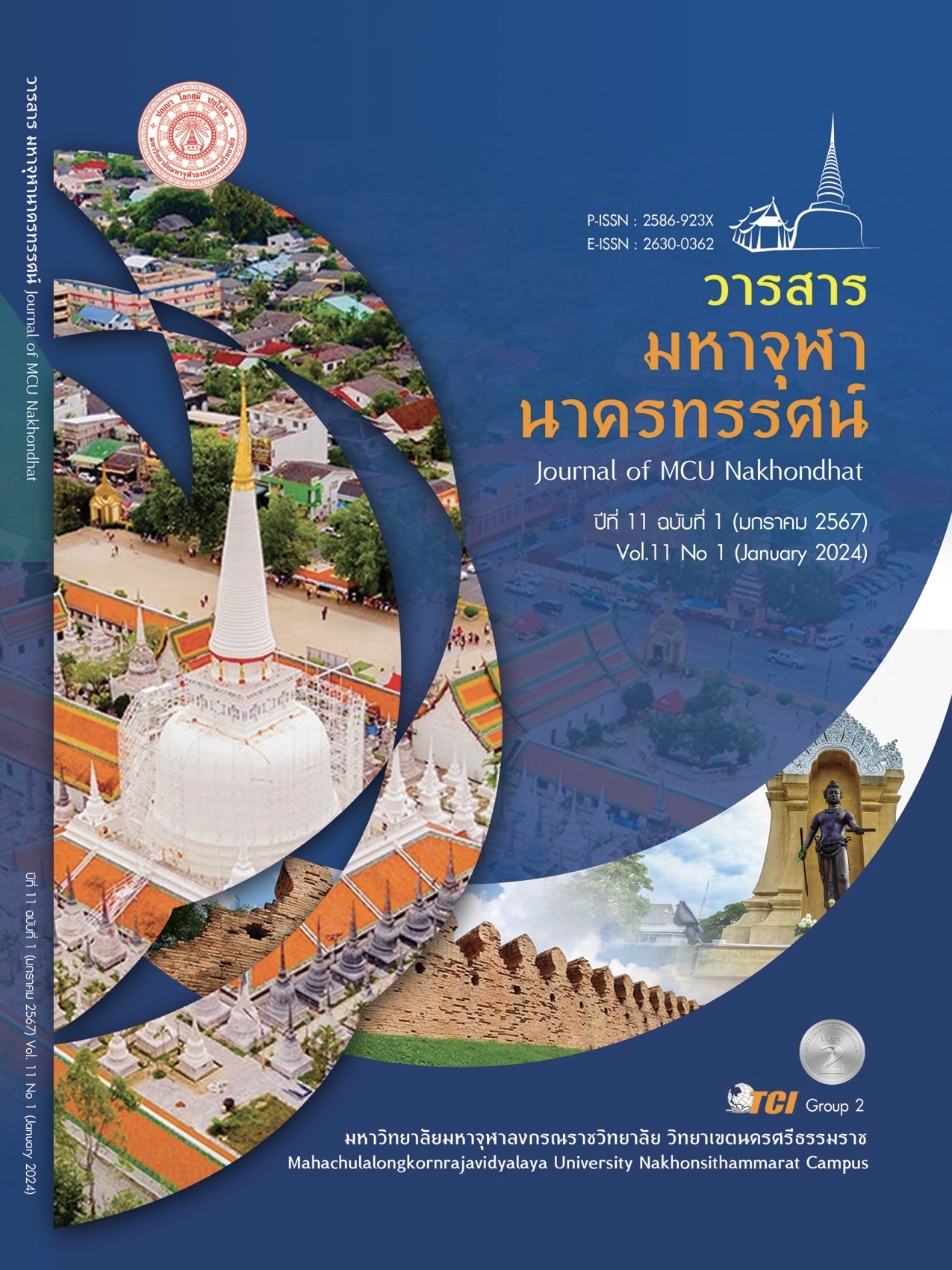MARKETING MIX FACTORS AFFECTING CUSTOMERS' PURCHASING BEHAVIOR OF SECOND - HAND DOLLS THROUGH ONLINE CHANNELS
Main Article Content
Abstract
This research aims to study 1) the marketing mix factors, 2) the behavior of customers in purchasing second-hand dolls via online channels, 3) comparing customers purchasing behavior of second-hand dolls via online channels classified by personal information, and 4) the marketing mix factors that affect customers' behavior of purchasing second-hand dolls through online channels. The study is a quantitative research tool using a questionnaire. Calculated by W.G. Cochran's formula and a sample of 400 was people who had previously purchased second - hand dolls online and processed using statistical percentage, mean, Chi-square, and Multiple Regression Analysis. The results of the study found that most the behavior of customers buy medium-sized licensed cartoons doll, mainly considering the type/style of the doll. Choose to buy by self - decision, according to preferences/accumulation via Facebook, through the reviews, purchase on average 3.5 times per year, with an average cost of 526.70 baht per time. The difference in personnel information gender, age, levels of education, occupation and income influences the difference customers' behavior in purchasing second-hand dolls online. Marketing mix factors are at a high level. Regarding prices, distribution channels, and promotion, they influenced customers' purchasing of second-hand dolls online with a significance of 0.01 level. The study recommends that products be clean, safe, and not harmful to users. It is outstanding and unique. Product listings should include accurate product information, and shows a clear selling price. There are many payment channels and quick and on - time delivery. Shipping costs are reasonable. Knowledgeable salespeople know about the products. Able to answer customer questions clearly. There should increase distribution channels. Including promote sales.
Article Details

This work is licensed under a Creative Commons Attribution-NonCommercial-NoDerivatives 4.0 International License.
References
กมลรัตน์ เส็งวงศ์. (2560). ปัจจัยที่มีผลต่อการตัดสินใจซื้อของเล่นและของใช้เด็กมือสองทางออนไลน์ของประชากรในเขตกรุงเทพมหานคร. ใน สารนิพนธ์การจัดการมหาบัณฑิต สาขาการจัดการ. มหาวิทยาลัยมหิดล.
กัลยา วาณิชย์บัญชา. (2548). การวิเคราะห์สถิติ : สถิติสำหรับการบริหารและวิจัย. กรุงเทพมหานคร: จุฬาลงกรณ์มหาวิทยาลัย.
กุลปริยา ยอดมูลคลี. (2564). ปัจจัยที่ส่งผลต่อพฤติกรรมการสะสมตุ๊กตาไอดอล. ใน สารนิพนธ์การจัดการมหาบัณฑิต สาขาการจัดการ. มหาวิทยาลัยมหิดล. โคตรตุ๊กตา. (2565). ทำไมตุ๊กตาถึงเป็นที่นิยม? เรียกใช้เมื่อ 11 มกราคม 2566 จาก http://www.krodtookkata.com/article/13/ทำไมตุ๊กตาถึงเป็นที่นิยม/
บริพัตร บุตรนาค. (2561). พฤติกรรมการซื้อของเล่นของลูกค้าในจังหวัดราชบุรี. ใน วิทยานิพนธ์บริหารธุรกิจมหาบัณฑิต สาขาวิชาหลักสูตรบริหารธุรกิจมหาบัณฑิต. มหาวิทยาลัยศิลปากร.
ประภัสรา ปานแก้ว. (2563). พฤติกรรมการซื้อตุ๊กตามือสองของผู้บริโภค. ใน วิทยานิพนธ์บริหารธุรกิจมหาบัณฑิต สาขาวิชาเอกบริหารธุรกิจ. มหาวิทยาลัยรามคำแหง.
Atom. (2562). หลักการขายออนไลน์. เรียกใช้เมื่อ 11 กรกฎาคม 2566 จาก https://kwa2539.blogspot.com/ p/1.html
Katexoxo. (2564). ข้อดีของการสนับสนุนการซื้อของมือ 2. เรียกใช้เมื่อ 11 กรกฎาคม 2564 จาก https://style. katexoxo.com/-ข้อดีของการสนับสนุนการซื้อของมือ2/
Smeleader. (2565). ขายตุ๊กตามือสอง ตัวละ 20 บาท ลงทุนไม่ถึง 10 บาท กำไรเท่าตัว. เรียกใช้เมื่อ 11 กรกฎาคม 2566 จาก https://www.smeleader.com/ขายตุ๊กตามือสอง-ตัวละ-20/


